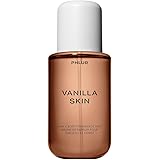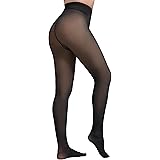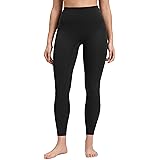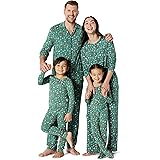The fashion industry stands at a pivotal crossroads, grappling with the escalating demands for both innovative design and environmental responsibility. Historically, the pursuit of luxury and trendsetting often came at a significant ecological cost, contributing to vast waste, pollution, and ethical concerns regarding animal welfare. However, as highlighted in the video above, a powerful paradigm shift is underway, championed by visionary designers like Stella McCartney, who are proving that high fashion and high ethics can, indeed, converge.
Her latest showcase at Paris Fashion Week, specifically for the 2025 season, serves as a beacon of this transformative movement. McCartney’s collection is not merely about aesthetic appeal; it represents a profound commitment to humanity, animals, and Mother Earth, demonstrating a tangible solution to the industry’s most pressing issues. This pivotal moment signals a future where sustainability is not a niche concept but an integral component of luxury design.
Stella McCartney’s Vision for a Sustainable Future at Paris Fashion Week
Stella McCartney has consistently positioned her brand as a pioneer in sustainable and ethical luxury fashion. Her Paris Fashion Week 2025 presentation, kicked off by the iconic Helen Mirren, underscored this unwavering dedication. The collection, famously heralded as her “most sustainable yet,” boasted an astonishing 98% sustainable and 100% cruelty-free material composition. This commitment moves far beyond token gestures, establishing a rigorous benchmark for what genuine eco-conscious design entails within the high-fashion landscape.
The collection’s core message, encapsulated by a spoken rendition of The Beatles’ ‘Come Together,’ resonated deeply with the collective call for change. This reflects a broader understanding that the challenges of environmental degradation and ethical sourcing require collaborative, innovative solutions across the entire supply chain. Her approach offers a blueprint for how brands can integrate robust sustainability practices without compromising on luxury or cutting-edge design.
The Power of Innovation: Redefining Materials
A significant aspect of Stella McCartney’s leadership in sustainable fashion is her brand’s relentless pursuit of material innovation. Traditional fashion often relies on resource-intensive or animal-derived materials, contributing to environmental harm. McCartney’s Paris Fashion Week collection, however, spotlighted several groundbreaking alternatives that offer superior performance and a reduced footprint.
Favers: A Plant-Based Feather Alternative
One notable innovation featured in the collection is “favers,” a plant-based alternative to traditional feathers. Down and feathers, often sourced from geese and ducks, raise significant ethical concerns regarding animal welfare and can be associated with unsustainable farming practices. Favers provide the luxurious loft and warmth of feathers without any animal products, representing a crucial step forward for cruelty-free fashion. This development is particularly significant as consumers increasingly demand transparency and ethical sourcing for all garment components.
Pure Tech: Fabric That Cleans the Air
Further pushing the boundaries of material science, the collection introduced “Pure Tech,” an advanced fabric engineered to absorb air pollutants. This textile innovation transforms garments into active agents for environmental improvement, demonstrating a proactive approach to mitigating ecological impact. Instead of merely being ‘less bad,’ Pure Tech offers a ‘good’ environmental benefit, presenting a truly regenerative potential for clothing. Such materials highlight the potential for textiles to contribute positively to ecosystem health, moving beyond simple sustainability to active environmental remediation.
Design with Purpose: Aesthetics Meet Ethics
Beyond the revolutionary materials, the Stella McCartney collection for Paris Fashion Week also made a strong visual statement through its design elements. The showcase featured deconstructed tailoring, which offers a modern, versatile aesthetic while often minimizing fabric waste through clever pattern cutting and construction techniques. This approach challenges conventional garment creation, fostering a more mindful and efficient design process.
Vibrant colors permeated the collection, demonstrating that sustainable fashion does not equate to a muted palette. Achieving rich, lasting colors with eco-friendly dyes and processes is another area of significant innovation within the textile industry. Furthermore, the incorporation of upcycled elements underscored the brand’s commitment to circularity, transforming pre-existing materials into new, desirable pieces. This not only reduces landfill waste but also conserves the resources that would have been used to create new raw materials.
Beyond the Runway: The Broader Impact of Sustainable Fashion
Stella McCartney’s work extends far beyond the confines of the runway; it sends a powerful message to the entire industry and to consumers globally. Her achievement of a 98% sustainable and 100% cruelty-free collection at Paris Fashion Week is not just a brand milestone, but a proof of concept that ethical and ecological considerations can be integrated into high-volume production without sacrificing quality or desirability. This significantly challenges the long-held notion that sustainable fashion is inherently less luxurious or less fashionable.
The increasing consumer awareness regarding the environmental footprint of fashion is driving demand for such ethical alternatives. Studies indicate a growing segment of consumers willing to pay more for sustainable products, reflecting a shift in values. Brands that proactively adopt responsible practices, like Stella McCartney, are therefore positioning themselves not just as ethical leaders, but also as commercially astute entities responding to evolving market trends. This movement helps to counter the pervasive issue of fast fashion, which contributes significantly to global waste and resource depletion, often relying on unsustainable practices.
Setting a New Standard: The Road Ahead for Stella McCartney
The Stella McCartney sustainable collection at Paris Fashion Week 2025 represents a critical inflection point for the global fashion industry. It champions a future where luxury is defined not just by exclusivity and craftsmanship, but also by responsibility and innovation. As other designers and brands observe this success, the pressure to adopt similar sustainable and cruelty-free practices will undoubtedly intensify. This collection effectively showcases that the tools, technologies, and creative vision necessary for a truly sustainable fashion future are already within reach.
Consequently, the example set by this collection encourages further investment in research and development for new sustainable materials and processes. It also highlights the importance of transparent supply chains and ethical labor practices, which are intrinsically linked to overall sustainability. The dialogue initiated by Stella McCartney at Paris Fashion Week 2025 is a crucial step towards transforming the fashion industry into a more regenerative and responsible sector, proving that style and substance can beautifully coexist.
The Ethical Runway: Your Q&A on Stella McCartney’s Collection
What was unique about Stella McCartney’s collection at Paris Fashion Week 2025?
Her collection was showcased as her most sustainable yet, made with 98% eco-materials and being 100% cruelty-free.
What are ‘Favers’ used in the collection?
Favers are an innovative plant-based alternative to traditional animal feathers, offering a cruelty-free option for luxurious loft and warmth.
What is ‘Pure Tech’ fabric?
‘Pure Tech’ is an advanced fabric featured in the collection that is engineered to absorb air pollutants, contributing positively to environmental health.
Why is Stella McCartney’s work important for the fashion industry?
She demonstrates that luxury fashion can be entirely ethical and sustainable, challenging traditional practices and setting a new standard for eco-conscious design.











